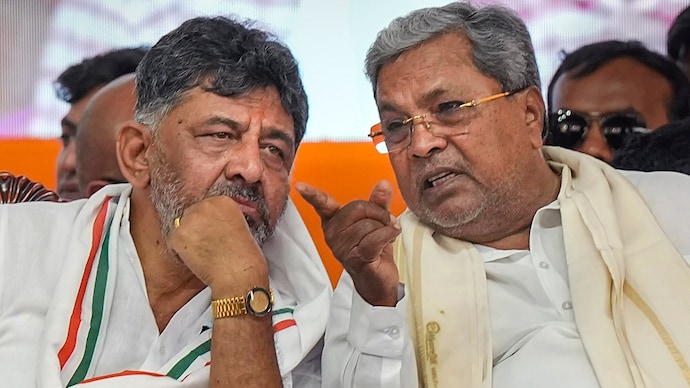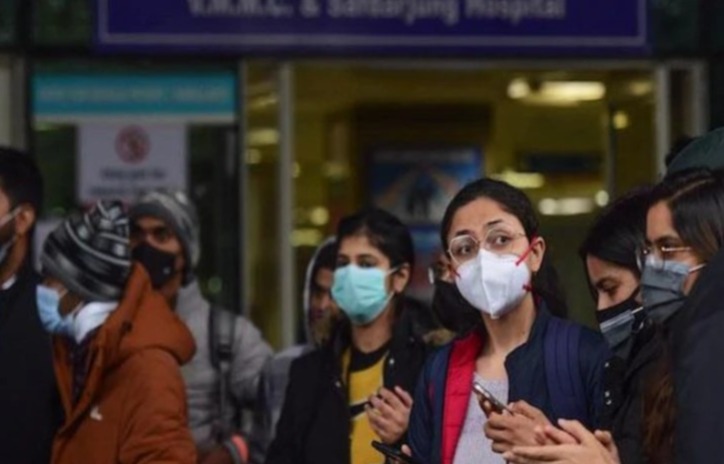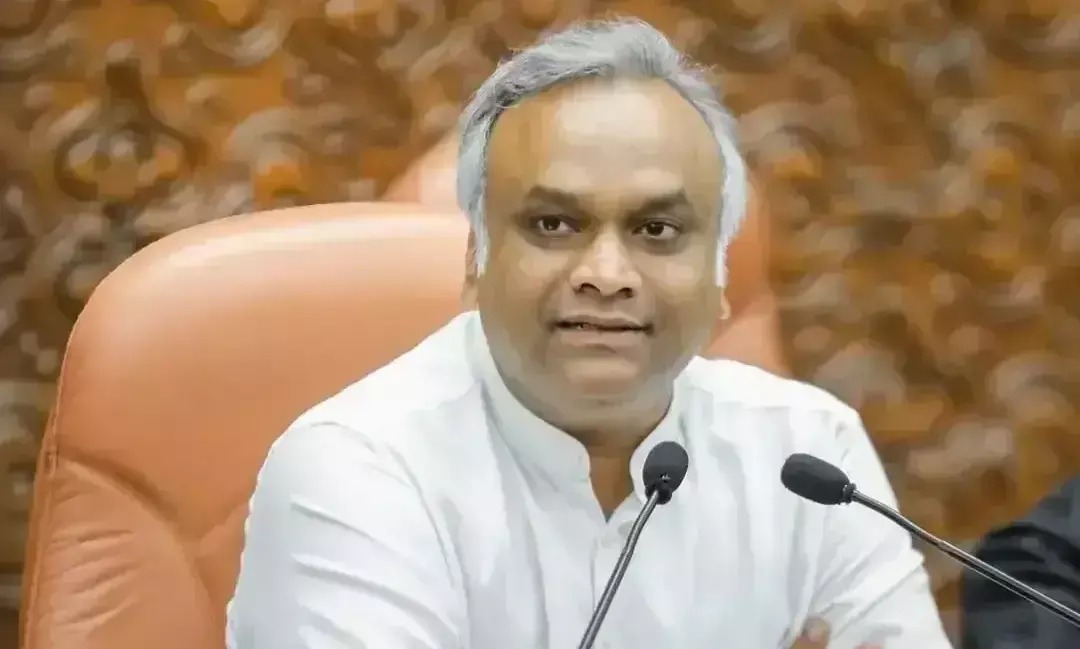Ahmedabad (PTI): A probe into e-mails threatening blasts at Narendra Modi Stadium in Ahmedabad and different places in 12 states has unravelled a tale of unrequited love and vengeance allegedly unleashed by a woman consultant of an MNC in Chennai to defame a man, leading to her arrest.
After the man who she dreamt would be her husband, married another woman, the accused, identified as Rene Joshilda, decided to avenge the 'rejection' and used deception to wreak havoc in his life.
According to police, she used fake email IDs, virtual private networks (VPNs), and the dark web to hide her identity and location.
She was arrested by the Ahmedabad cyber crime from her residence in Chennai on Saturday following an extended technical surveillance, which involved picking the digital trail, an official said on Monday.
Joint Commissioner of Police (Crime) Sharad Singhal on Monday said Joshilda created different email IDs, some of which were in the name of Divij Prabhakar, who she wanted to marry.
An engineer trained in Robotics, Joshilda has been working as a senior consultant at a multinational firm in Chennai since 2022.
"She has done her engineering from Chennai and a course in Robotics. Currently, she is a senior consultant at Deloitte. She loved Divij Prabhakar and wanted to marry him but it remained one-sided," Singhal told reporters.
Her dreams crashed when Prabhakar married another girl in February, filling her with revulsion and revenge.
"In a bid to frame him, she created different email IDs, some of which were in the name of Prabhakar," the police officer added.
Blinded by love, Joshilda used her technical knowledge to spread panic, blissfully unaware of the impact of her action on innocent people who became unintentional targets due to hoax emails.
The police officer said Joshilda sent emails from anonymous accounts threatening to blow up the Narendra Modi Stadium, BJ Medical College, and at least two schools in Ahmedabad.
"She allegedly sent emails to various locations in 11 other states also (besides Gujarat) timing them ahead of some religious processions or visits by VIPs," he said.
Police from various states coordinated with the cyber crime police of Ahmedabad.
"The accused used virtual numbers to create fake email IDs and used the dark web," Singhal added.
Explaining the virtual cat-and-mouse game, the police officer said Joshilda played her moves smartly and covered her virtual trail.
However, a small mistake on her part led investigators to her.
"We were tracking her for a long time. She was very smart and didn't reveal her virtual trail, but due to a small mistake of hers, we tracked her and caught her from her house in Chennai," Singhal said.
He said police recovered significant digital and paper evidence against Joshilda.
"We can say that we have busted a big module," the police officer exclaimed.
The investigation stemmed from an FIR registered at Sarkhej police station in Ahmedabad after a threat mail was received by a school on June 3, 2025.
In the mail, the sender stated she was "going to blast the bomb in your school to bring police attention about the rapist who raped the girl in Lemon Tree Hotel in Hyderabad in 2023 (sic)".
The accused sent 13 threat emails to Narendra Modi Stadium, four to Geneva Liberal School, three to Divya Jyoti School and one to BJ Medical College, police said.
Apart from this, emails threatening bomb blasts were also sent to target locations in Maharashtra, Rajasthan, Tamil Nadu, Delhi, Karnataka, Kerala, Bihar, Telangana, Punjab, Madhya Pradesh, and Haryana, police said.
"Bomb successfully planted in Narendra Modi Stadium. Save the stadium if you can," reads one such mail.
Another mail sent to BJ Medical College after the Air India crash stated: "I think now you know power. Like we sent you mail yesterday we crashed the Air India plane with our former CM. We know the police would have thought that the plane crash was a hoax and ignored it. Well done to our pilot. Now you know we are not playing. Now you know".
Let the Truth be known. If you read VB and like VB, please be a VB Supporter and Help us deliver the Truth to one and all.
Bengaluru: In a significant move towards enhancing disaster preparedness, the Karnataka State Natural Disaster Monitoring Centre (KSNDMC), in collaboration with UNICEF, launched the Karnataka State Disaster Risk Reduction Roadmap (KSDRR) 2025-2030 on Monday, marking the International Day for Disaster Risk Reduction.
With this initiative, Karnataka has become the fifth state in India to launch the Disaster Risk Reduction Roadmap, following Bihar, Andhra Pradesh, Tamil Nadu and Assam, as reported by The New Indian Express.
The new roadmap is designed to mitigate the impact of natural disasters and reduce the state’s vulnerability. Over the past five years, Karnataka has suffered an estimated Rs 1 lakh crore in losses due to floods, droughts, lightning, hailstorms, fire, and other calamities. Addressing these challenges, Mullai Muhilan, Director of KSNDMC, emphasised that the goal of the KSDRR is to implement a systematic approach to preventing and managing such disasters.
“The theme on this day is ‘Fund Resilience, Not Disasters’, and that is why this roadmap is a framework of existing solutions to reduce and prevent losses by mitigating floods, drought, earthquakes, heat waves and so on,” TNIE quoted Muhilan as saying.
The KSDRR outlines a multi-phase strategy, which includes a vulnerability profile of Karnataka, highlights DRR developments, initiatives taken in the state, financial arrangements, and defines the roles and responsibilities of stakeholders as per the National Disaster Management Act, 2005.
The roles and responsibilities, work implementation in the road map are based on three major milestones divided to achieve in five years. All departments, gram panchayats have prepared disaster management plans with latest data as baseline information.
In milestone 2 for the year 2027-28, the roadmap envisions that the state has to collaborate and partner with various stake holders from local to global level. In milestone 3, for the year 2029-30, it mentions reducing infrastructure damage, human and animal deaths, casualties by 75%.
“Currently, KSNDMC has applications including Varuna Mitra, dedicated mainly to providing weather forecast to farmers across the state. Similarly, we have Megha Sandesha, a mobile app developed in collaboration with the Indian Institute of Science. This app was created to mitigate urban floods and it provides information to various government bodies especially BWSSB, and others. We are still working on this app to provide information and data to BDA, GBA on the areas that might flood in the future. They can use this data before giving clearance to buildings of layouts,” explained Muhilan.
As part of the roadmap, several government departments have been directed to work towards risk identification, risk reduction, preparedness, financial protection, and resilient recovery. For instance, the Education Department will be responsible for developing school-level disaster management plan.
The roadmap also outlines a robust infrastructure for real-time disaster monitoring. Karnataka has already installed 6,500 telemetric rain gauge stations at the gram panchayat level, alongside 850 telemetric weather stations at the taluk level. Other installations include lightning and thunderstorm sensors, water level sensors in Bengaluru and surrounding cities, and seismic sensors at major dam sites.




